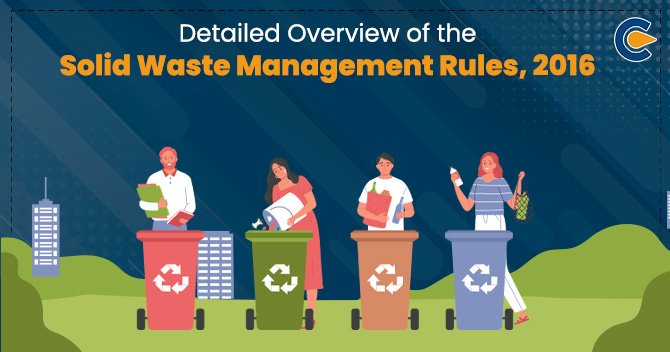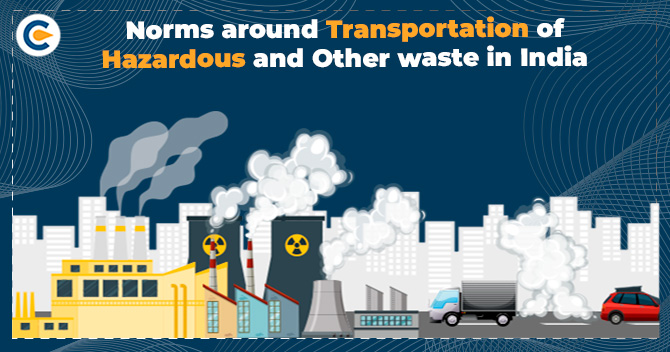E-waste is the most prominent waste source in the whole world, and it also poses a major environmental threat. The E-waste recycling business is highly increasing at the global level with the growth of e-waste. The huge growth of customers of electronic products has led to an expansion in the recycling of e-waste. E-waste is not only a waste but also an environmental and health hazard.
An Overview of the E-Waste Recycling Business
India tops at rank 5 in producing E-Waste, and this gives an excellent opportunity for the e-waste recycling business. With the increase in the e-waste recycling business, a greater number of jobs are also made available at the local level.
The Ministry of Information Technology has developed many cost-effective technologies for e-waste processing and recycling. However, many kinds of Government permissions are required to start an e-waste recycling business. The most common steps one needs to follow are:
- Registering at Udyog Aadhar MSME.
- Obtaining permission from State Pollution Control Board[1]
- Obtaining approval from the Ministry of the Environment.
Electronic products and their waste have so many precious metals. Those metals can be used after recovering from e-waste. E-waste recycling business aids in effective waste management. E-waste also contains some toxic and dangerous contaminants that can damage the environment. It is necessary to have a proper e-waste recycling business.
E-waste recycling business can be done for a list of services or fields such as data destruction, e-waste collection, reconstruction and re-sale of old electronic items, de-fabrication and distribution of unused electronic components. The e-waste recycling business should be set up after considering initial and ongoing costs, companies from which e-wastes will be collected, production capacity, and the business plan’s pricing strategy. A variety of different factors determines the cost of the e-waste recycling business.
The main activities of an e-waste recycling business include:
- Waste collection and acquisition from different organisations.
- Separation of functional components and reuse of materials used.
- Extraction and rehabilitation of valuable materials, metals and plastic.
Facilities in the E-Waste Recycling Business
There is a requirement for certain facilities in the e-waste recycling business. Some of them are:
- Suitable waste water treatment equipment and air pollution control equipment as per the type of processes of the recycling business.
- Suitable space for dismantling equipment
- Noise control devices
- PPEs for the workers, including gloves, masks, goggles, gumboots, etc.
- Appropriate facilities for collection and storage of residue, floor cleaning and other hazardous materials
- Agreement with TSDF (Treatment, Storage & Disposal Facility) operator.
- Extra care at the time of recycling the cathode-ray tubes
- Adoption of Ni-Chrome hot wire cutting technique, diamond wire method, or diamond saw separation for handling cathode ray tubes.
E-Waste Recycling Process
The E-waste recycling business is highly labour intensive and involves too many different steps starting from the e-waste collection or sourcing to final material processing. The processing either ends at obtaining desired recycled products or the raw materials for reuse.
The E-waste recycling process refers to the reuse and reprocessing of Electrical and Electronic Equipment that has been rejected or regarded as end-of-life products. There is an e-waste recycling plant where the end-of-life electronic products which are collected from the consumers are transferred for the recycling process. Such end-of-life products are transported to the recycling plant for segregation, dismantling, treatment and disposal. For setting up an e-waste recycling plant, the occupier of such plant has to take permission or consent to establish from the Pollution Control Board under the Water and Air Act.
The following steps are taken while the e-waste recycling process:
- Collection
The very first step in the process of e-waste recycling is to collect the e-waste from different consumers. The collected e-wastes are transported to the e-waste recycling plant.
- Sorting
When the e-wastes arrive at the recycling plant, then the first step taken is to sort all the types of e-waste manually.
- Dismantling
After manual sorting, the next step is manual dismantling. The wastes are separated into two categories; one is the waste that can be reused, and another one is the waste that is still in the recycling process.
- The large size reduction process
The e-waste that cannot be dismantled is granulated with other dismantled e-wastes.
- The small size reduction process
The finer or smaller e-wastes are evenly spread over the conveyor belt and then further broken down.
- Magnetic separation
The magnet is used in this step to remove the magnetic materials from the e-waste, such as iron or steel.
- Non-metallic and metallic components separation
The metallic components such as copper, aluminium or brass are separated so that only non-metallic materials are left behind in the debris of e-waste.
- Water separation
The last step in the process of e-waste recycling is that the plastic contents are separated from the glass by use of water.
Once all steps are completed, then the retrieved materials are sold as raw materials for reuse.
The components retrieved from the e-waste recycling process are:
- Plastic: all the plastic materials are transported to the recyclers to use for manufacturing plastic items.
- Metal: all the metals retrieved are transported to the recyclers to manufacture new metallic items.
- Mercury: all the devices that contain mercury are transported to the mercury recycling units, and such units use the retrieved mercury in different sectors.
- Printed circuit board: circuit boards are transported to the companies where these circuit boards are smelted to recover valuable metals like silver, gold, tin, palladium, copper, etc.
- Hard drives: hard drives are shredded and processed into aluminium for use in the automotive industry.
- Ink and toner cartridges: these cartridges are sent back to their respective manufacturing units for recycling as they are re-manufactured.
- Batteries: batteries are sent to some special kind of recyclers where the plastic is removed from the batteries.
Procedure to Start an E-Waste Recycling Business
The following steps are required to be followed to start an e-waste recycling business in India:
- Research and identification of e-waste to be recycled
The one who starts to run an e-waste recycling business must do thorough research and have to gather all the information about electronic items and their recycling. They need to have good knowledge of the electronics market. They need to identify the electronic items that are recycled.
They need to select a list of services they want to offer, such as data destruction, asset management, collection of e-waste, refurbishing old electronics, de-manufacturing unused e-waste, reverse logistic, etc.
- Business plan
Based on the research, a business plan is created. It is a roadmap for the working of the e-waste recycling business. It should include start-up and recurring costs, companies from whom e-wastes are going to be collected, production capacity, pricing strategy, sell of recycled materials.
- Licenses and Permits
To start the e-waste recycling business, one must obtain the consent to establish and consent to operate from the respective State Pollution Control Board under the Water and Air Act. To know the disposal methods and zoning requirements for the e-waste recycling business, one should contact the public welfare department of their area.
- E-waste recycling business set up.
Selecting an area for an e-waste recycling business establishment is very important, and it is suggestive of being outside the city. The creation of a floor layout plan, a place for scrap storage, disassembly area, separate space for hazardous wastes, etc., must be considered before such establishment. The necessary equipment, such as conveyor belts, cathode ray tubes, weighing machines, the vehicle for transportation, etc., should be ready before the setting up of the entire e-waste recycling business. There should be safety measures installed to protect all the worker’s and other employees’ health.
Conclusion
In India, there is a huge number of e-waste generated on a daily basis, which is attracting more opportunities in the e-waste recycling business. To set up an e-waste recycling business, one should also have no objection from his neighbours. The e-waste recycling business setup is always outside the city. The person who desires to set up such a recycling business must have a floor plan ready with the location of scrap storage, a distribution dock, an office and a separate room for hazardous products. Before starting the business, he must have all the required equipment, such as a conveyer belt, a cathode ray tube, a measuring machine, and vehicles. They must have strict safety measures at work because most of the e-waste contains heavy toxic metals. The well-being and safety of an employee should be one of the top priorities of such a recycling business.
Read Our Article:How to start an E-waste Management Business in India?











